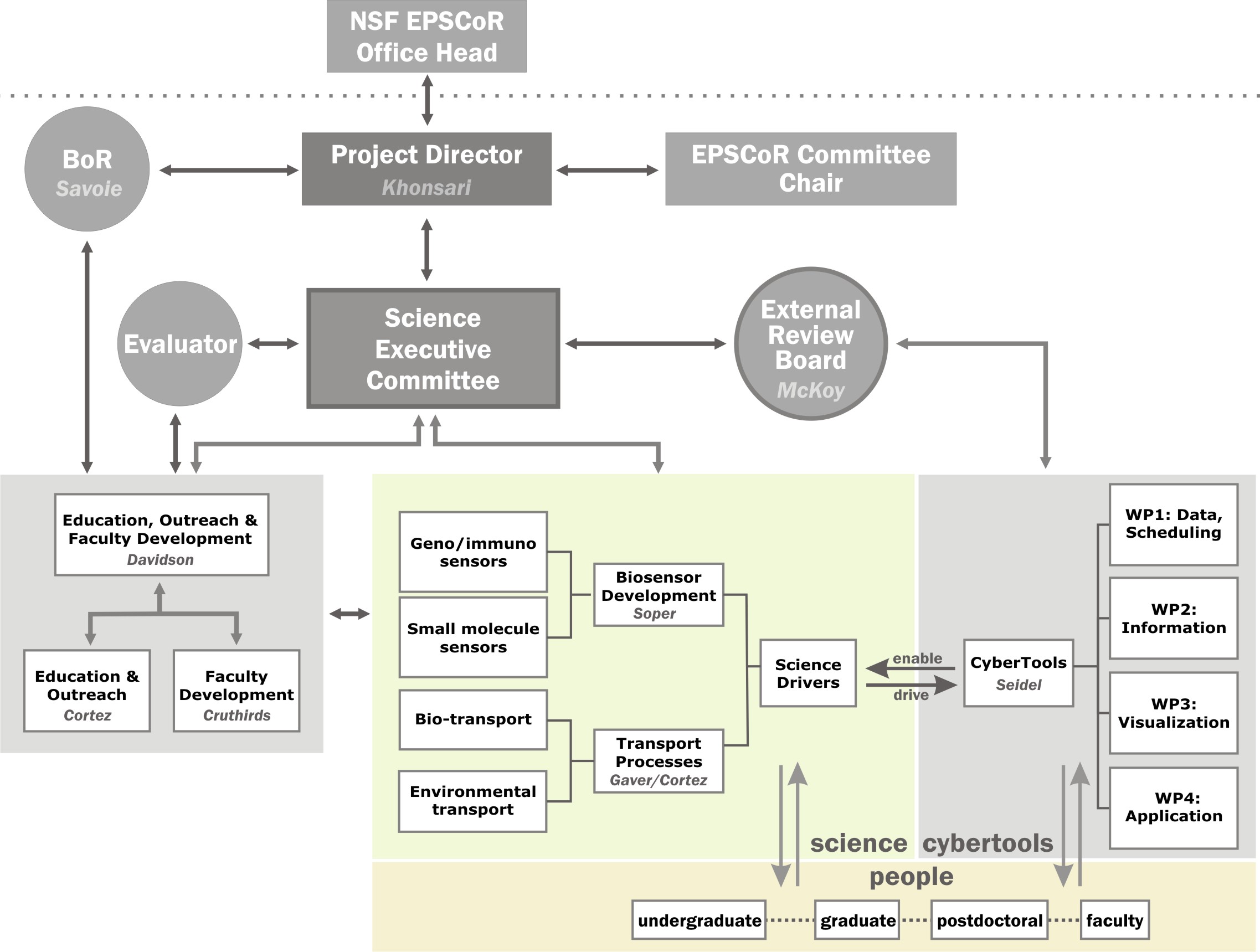Latest News
All-hands Meeting
The NSF EPSCoR RII Symposium took place on Monday, May 11, 2009 in Baton Rouge, Louisiana. The symposium featured four 'anchor' presentations on CyberTools/Science Driver interactions, a poster competition, an outreach/education session, and plenty of opportunities for networking. Find the Symposium's presentations and posters here.
[Other News]
What Is CyberTools?
CyberTools has the long-term goal of creating a thriving environment for research efforts across the state of Louisiana. The hardware for this is already in place, as the Louisiana Optical Network Initiative (LONI), a fiber optic network that links Louisiana to the National Lambda Rail, one of the most advanced computing infrastructures in the nation. LONI links supercomputers at the Louisiana's major universities and research centers.
CyberTools will take advantage of LONI by providing cutting-edge services including advanced information processing, data management, storage, and coscheduling. Four complementary work packages have been designed to implement CyberTools:
WP 1: Scheduling and Data Services
This WP will perform the entire data management and scheduling services needed to support the science projects. The will involve data generation and management of large amounts of simulation as well as experimental and/or observational data. This necessarily requires development and deployment of efficient management, retrieval, categorization, and mining of data distributed across LONI. Further, scheduling (and co-scheduling) computational resources, from CPUs to network and archival resources for advanced science and educational applications are to be developed in this WP. Access to these services will be provided through portals and application toolkits provided by other WPs.
WP 2: Information Services and Portals
The science projects will require reliable, up-to-date information services and portals for discovering, monitoring, and providing information on computing, networking, providing data resources, as well as running applications. In WP2, simplified interfaces will be developed that will enable non-expert users to interface to resources and services, collect information, monitor/steer simulations, archive and retrieve experimental data, and perform teamwork collaborations. A particular focus will be in the area of application monitoring, critical for DDDAS applications, and for collaborators to interact in real time with their simulations and experiments.
WP 3: Visualization Services
Development of enabling tools for visualization of data, observation of the results of simulations, and animation of time-dependent predictions is an essential component of the CyberTools. In WP3, data integration architecture required for converting scientific data formats into a visualization format for front-end visualization will be developed. This will include integration of appropriate data architecture into the HD streaming visualization service and automation for providing front-end visualization as a network service.
WP 4: Application Services and Toolkits
This is the central WP that supports development of codes for all science projects. Application development toolkits, libraries, and services will be developed in collaboration with the four science teams. This WP will exploit the LONI computing environment and future petascale systems to create a foundation for computing services for virtually every discipline across the State for decades to come. Categorically, it will serve two primary needs: application-specific toolkits for MD and CFD simulations and community standard application programming interfaces (APIs) for grid services.
Below is the organizational chart for CyberTools. You can click on it for a bigger image.

